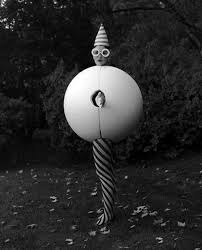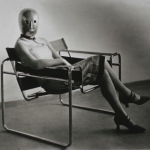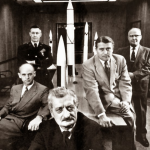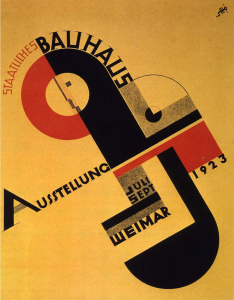 Asymmetry, elegance, beauty and practicality, this describes some of the Bauhaus design curricula. The school emphasized a teaching method that shifted the mindset from competition-focused to a focus on personal potential and universal purpose.
Asymmetry, elegance, beauty and practicality, this describes some of the Bauhaus design curricula. The school emphasized a teaching method that shifted the mindset from competition-focused to a focus on personal potential and universal purpose.  Lead by Walter Gropius, Bauhaus was founded in 1919 in Weimar, Germany. The Bauhaus teaching style resembled a utopian artists’ guild. To set up a new way of living, the Bauhaus taught principles that instituted creative design and technical disciplines. Community living in a unified-designed environment can influence an individual to adopt a more creative design awareness. Design knowledge can add vitality to live a better life. The school moved to Dessau, Germany in 1924. By 1933, the Nazi political party had forced the school to close
Lead by Walter Gropius, Bauhaus was founded in 1919 in Weimar, Germany. The Bauhaus teaching style resembled a utopian artists’ guild. To set up a new way of living, the Bauhaus taught principles that instituted creative design and technical disciplines. Community living in a unified-designed environment can influence an individual to adopt a more creative design awareness. Design knowledge can add vitality to live a better life. The school moved to Dessau, Germany in 1924. By 1933, the Nazi political party had forced the school to close

 Marcel Breuer and Joseph Albers immigrated to the United States to take teaching positions at Yale. After Walter Gropius went to Harvard, Moholy-Nagy eventually established a New Bauhaus school.
Marcel Breuer and Joseph Albers immigrated to the United States to take teaching positions at Yale. After Walter Gropius went to Harvard, Moholy-Nagy eventually established a New Bauhaus school.
In 1922, Bauhaus principles were introduced in the United States with The Chicago Association of Arts and Industries. The association’s primary purpose was to open a school of design. Funding to initiate the New Bauhaus school was a major problem. Maholy-Nagy’s hard work and persistence eventually led to the opening of The School of Design in 1939. A few years later in 1944, a new board of directors dissolved The School of Design and formed the new Institute of Design. What started out as an artists’ guild and design school with a pedagogical teaching approach in Germany, evolved into one of the most prestigious industrial design graduate schools in the United States, the Illinois Institute of Technology – Institute of Design.
 As World War II progressed, the import of other highly regarded Germans was essential to the U.S. war effort. A secret project “Operation Paperclip” involved 88 German scientists and rocket technology production. Other German scientists provided necessary help developing the Atomic Bomb.
As World War II progressed, the import of other highly regarded Germans was essential to the U.S. war effort. A secret project “Operation Paperclip” involved 88 German scientists and rocket technology production. Other German scientists provided necessary help developing the Atomic Bomb.
The video shows a quick fundamental review of the Bauhaus School’s history, philosophy and achievements.


